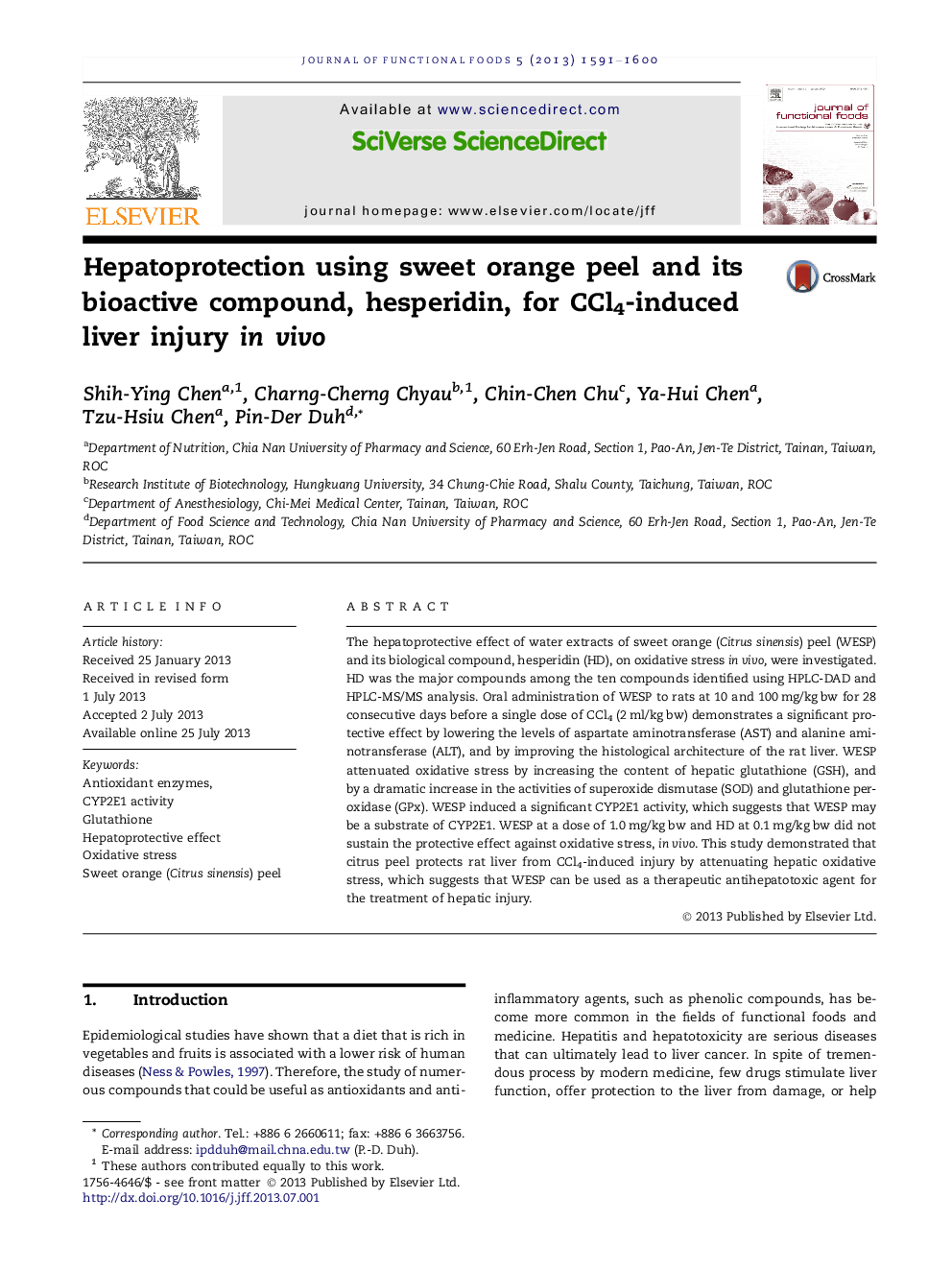| کد مقاله | کد نشریه | سال انتشار | مقاله انگلیسی | نسخه تمام متن |
|---|---|---|---|---|
| 10553405 | 967763 | 2013 | 10 صفحه PDF | دانلود رایگان |
عنوان انگلیسی مقاله ISI
Hepatoprotection using sweet orange peel and its bioactive compound, hesperidin, for CCl4-induced liver injury in vivo
دانلود مقاله + سفارش ترجمه
دانلود مقاله ISI انگلیسی
رایگان برای ایرانیان
کلمات کلیدی
موضوعات مرتبط
مهندسی و علوم پایه
شیمی
شیمی آنالیزی یا شیمی تجزیه
پیش نمایش صفحه اول مقاله

چکیده انگلیسی
The hepatoprotective effect of water extracts of sweet orange (Citrus sinensis) peel (WESP) and its biological compound, hesperidin (HD), on oxidative stress in vivo, were investigated. HD was the major compounds among the ten compounds identified using HPLC-DAD and HPLC-MS/MS analysis. Oral administration of WESP to rats at 10 and 100 mg/kg bw for 28 consecutive days before a single dose of CCl4 (2 ml/kg bw) demonstrates a significant protective effect by lowering the levels of aspartate aminotransferase (AST) and alanine aminotransferase (ALT), and by improving the histological architecture of the rat liver. WESP attenuated oxidative stress by increasing the content of hepatic glutathione (GSH), and by a dramatic increase in the activities of superoxide dismutase (SOD) and glutathione peroxidase (GPx). WESP induced a significant CYP2E1 activity, which suggests that WESP may be a substrate of CYP2E1. WESP at a dose of 1.0 mg/kg bw and HD at 0.1 mg/kg bw did not sustain the protective effect against oxidative stress, in vivo. This study demonstrated that citrus peel protects rat liver from CCl4-induced injury by attenuating hepatic oxidative stress, which suggests that WESP can be used as a therapeutic antihepatotoxic agent for the treatment of hepatic injury.
ناشر
Database: Elsevier - ScienceDirect (ساینس دایرکت)
Journal: Journal of Functional Foods - Volume 5, Issue 4, October 2013, Pages 1591-1600
Journal: Journal of Functional Foods - Volume 5, Issue 4, October 2013, Pages 1591-1600
نویسندگان
Shih-Ying Chen, Charng-Cherng Chyau, Chin-Chen Chu, Ya-Hui Chen, Tzu-Hsiu Chen, Pin-Der Duh,